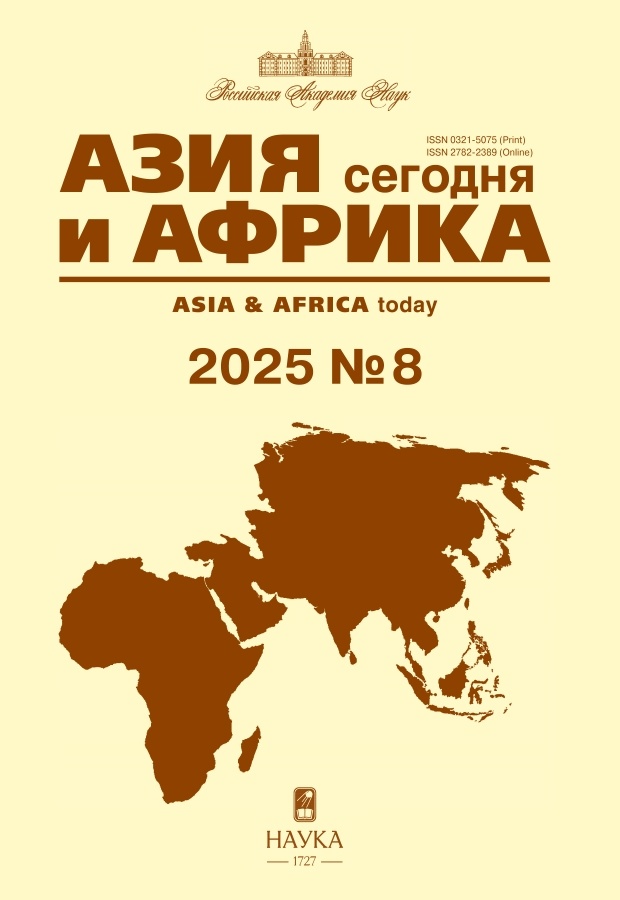Внешняя торговля КНР: зарубежный и отечественный секторы экономики
- Авторы: Изотов Д.А1
-
Учреждения:
- Институт экономических исследований, ДВО РАН
- Выпуск: № 12 (2024)
- Страницы: 24-32
- Раздел: Политика, экономика
- URL: https://jdigitaldiagnostics.com/0321-5075/article/view/647483
- DOI: https://doi.org/10.31857/S0321507524120034
- ID: 647483
Цитировать
Полный текст
Аннотация
Показано снижение доли зарубежного сектора во внешней торговле Китая в среднем за 2018–2023 г. Доля зарубежного сектора во внешней торговле КНР по форме собственности составляла 37% (предприятия с зарубежным капиталом), а по доле компонентов в товарах – 23% (торговля с внешней переработкой). Установлено, что доля торговли с внешней переработкой составляла менее половины товарооборота предприятий с зарубежным капиталом, продолжая при этом оставаться одним из главных источников высокотехнологичного экспорта Китая. Обнаружено, что обычная торговля стала доминирующей практически по всем товарным группам внешней торговли Китая, а её рост обеспечивался частными предприятиями отечественного сектора. Показано, что отечественный сектор КНР расширял географическую структуру экспорта и усложнял его компонентный состав.
Об авторах
Д. А Изотов
Институт экономических исследований, ДВО РАН
Email: izotov@ecrin.ru
ORCID iD: 0000-0001-9199-6226
доктор экономических наук, ведущий научный сотрудник отдела региональных моделей Хабаровск, Россия
Список литературы
- Kim B. What has China learned from processing trade? Economic Structures. 2017. Vol. 6. Iss. 32. Pp. 1–14. doi: 10.1186/s40008-017-0088-5
- Hu C., Tan Y. Export spillovers and export performance in China. China Economic Review. 2016. Vol. 41. Pp. 75–89. doi: 10.1016/j.chieco.2016.08.008
- Dai M., Maitra M., Yu M. Unexceptional exporter performance in China? The role of processing trade. Journal of Development Economics. 2016. Vol. 121. Pp. 177–189. doi: 10.1016/j.jdeveco.2016.03.007
- Yang C., Dietzenbacher E., Pei J., Chen X., Zhu K., Tang Z. Processing trade biases the measurement of vertical specialization in China. Economic Systems Research. 2015. Vol. 27. Iss. 1. Pp. 60–76. doi: 10.1080/09535314.2014. 955463
- Портяков В.Я. Политика внешнеэкономической открытости в Китайской Народной Республике: основные итоги и перспективы. Контуры глобальных трансформаций: политика, экономика, право. 2019. Т. 12. № 1. С. 44–68. doi: 10.23932/2542-0240-2019-12-1-44-68
- Lovely M.E., Huang Z. Foreign Direct Investment in China’s High-technology Manufacturing Industries. China & World Economy. 2018. Vol. 26. Iss. 5. Pp. 104–126. doi: 10.1111/cwe.12258
- Fu X. Processing Trade, FDI and the Exports of Indigenous Firms: Firm-Level Evidence from Technology-Intensive Industries in China. Oxford Bulletin of Economics and Statistics. 2011. Vol. 73. Iss. 6. Pp. 792–817. doi: 10.1111/j.1468-0084.2011.00673.x
- Xie W., Xue T. FDI and Improvements in the Quality of Export Products in the Chinese Manufacturing Industry. Emerging Markets Finance and Trade. 2019. Vol. 56. Iss. 13. Pp. 1–11. doi: 10.1080/1540496x.2019.1609936
- Luo W., Lu Y., Shi H. Why did Chinese state-owned enterprises have higher export propensity? A study based on 2003–2007 data. Economics of Transition and Institutional Change. 2023. Vol. 31. Iss. 3. Pp. 561–588. doi: 10.1111/ecot.12353
- Dong G., Kokko A., Zhou H. Innovation and export performance of emerging market enterprises: The roles of state and foreign ownership in China. International Business Review. 2022. Vol. 31. Iss. 6. doi: 10.1016/j.ibusrev.2022.102025
- Lin K.J., Lu X., Zhang J., Zheng Y. State-owned enterprises in China: A review of 40 years of research and practice. China Journal of Accounting Research. 2020. Vol. 13. Pp. 31–55. doi: 10.1016/j.cjar.2019.12.001
- Hummels D., Ishii J., Yi K.M. The Nature and Growth of Vertical Specialization in World Trade. Journal of International Economics. 2001. Vol. 54. Iss. 1. Pp. 75–96. doi: 10.2139/ssrn.163193
- Brandt L., Li B., Morrow P.M. Processing trade and costs of incomplete liberalization: The case of China. Journal of International Economics. 2021. Vol. 131. doi: 10.1016/j.jinteco.2021.103453
- Brandt L., Morrow P.M. Tariffs and the Organization of Trade in China. Journal of International Economics. 2017. Vol. 104. Pp. 85–103. doi: 10.1016/j.jinteco.2016.10.010
- Xie Y., Song C. The role of processing trade in exporters’ responses to exchange rate: Evidence from China. The World Economy. 2020. Vol. 43. Pp. 1521–1543. doi: 10.1111/twec.12909
- Lemoine F., Unal D. China’s Foreign Trade: A “New Normal”. China & World Economy. 2017. Vol. 25. Iss. 2. Pp. 1–21. doi: 10.1111/cwe.12191
- Jiang X., Kong Y., Li X., Yang C., Chen X. Re-estimation of China-EU trade balance. China Economic Review. 2019. Vol. 54. Pp. 350–366. doi: 10.1016/j.chieco.2019.01.008
- Chen Z., Erbahar A., Zi Y. Made and Created in China: The Role of Processing Trade. CEPR International trade and regional economics DP14486. 2023. https://cepr.org/publications/dp14486 (accessed 01.06.2024)
- Bai X., Hong S., Wang Y. Learning from processing trade: Firm evidence from China. Journal of Comparative Economics. 2021. Vol. 49. Pp. 579–602. doi: 10.1016/j.jce.2020.12.001
- Manova K., Yu Z. How Firms Export: Processing vs. Ordinary Trade with Financial Frictions. Journal of International Economics. 2016. Vol. 100. Pp. 120–137. doi: 10.1016/j.jinteco.2016.02.005
- Chen Q., Zhu K., Liu P., Chen X., Tian K., Yang L., Yang C. Distinguishing China’s processing trade in the world input-output table and quantifying its effects. Economic Systems Research. 2019. Vol. 31. Iss. 3. Pp. 361–381. doi: 10.1080/09535314.2018.1534225
Дополнительные файлы











